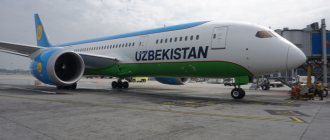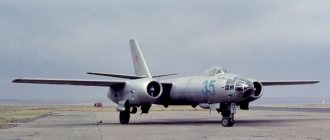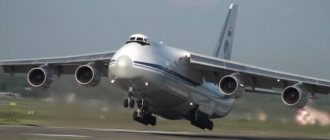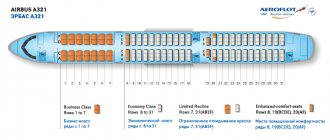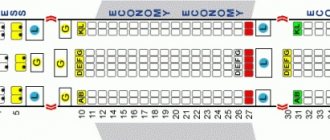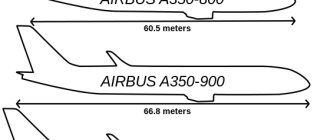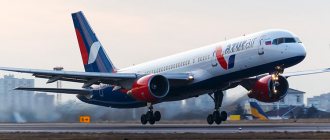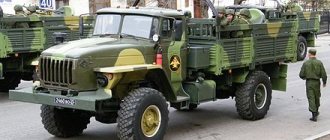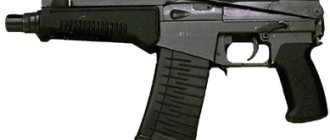| Airbus A320 | |
| Airbus A320-211 of Lufthansa airlines | |
| Type | Narrow-body jet passenger aircraft |
| Developer | Airbus |
| Manufacturer | Airbus |
| First flight | February 22, 1987 |
| Start of operation | April 1988 |
| Status | produced, operated |
| Operators | American Airlines (394) Lufthansa (168) United Airlines (162) British Airways (130) Aeroflot (109) Turkish Airlines (100) Air Canada (96) |
| Years of production | 1987 - present V. |
| Units produced | 8419 [1](September 30, 2020) |
| Unit cost | A318: $71.9 million[2] A319: $85.8 million A320: $93.9 million A321: $110.1 million |
| Options | Airbus A320neo Airbus A318 |
| Images on Wikimedia Commons | |
The Airbus A320
is a family of narrow-body aircraft for short and medium-haul airlines, developed by the European consortium Airbus SAS. Released in 1988, it became the first passenger aircraft to use a fly-by-wire control system.
As of July 3, 2020, there are orders for 10,813 aircraft of the A320 family, with 7,911 aircraft sold, of which 6,401 aircraft are in operation[3]. The main competitor of the Airbus A320 family is the Boeing 737 family.
Content
- 1 Aerodynamic design
- 2 History 2.1 Development
- 2.2 Features
- 2.3 Production
- 2.4 Operation
- 2.5 Competition
- 5.1 A318
Story
Development
Following the success of the Airbus A300, the Airbus consortium began developing a new aircraft designed to replace the most popular aircraft at the time - the Boeing 727 and early versions of the Boeing 737. It was intended to create an aircraft of similar dimensions, but more advanced in terms of economy and with different seating options. Digital technology would give the A320 an advantage over its main competitors, the Boeing 727 and 737.
Peculiarities
Airbus A319 cockpit
Main landing gear of the A320
A special feature of the Airbus A320 is its advanced technical equipment (by the standards of the 1980s) cockpit and fly-by-wire control system. Instead of mechanical dial instruments, information about the position of the aircraft and the state of its engines and auxiliary systems is displayed on six cathode-ray screens (after the start of production of the A318 - on LCD), occupying most of the instrument panel. In addition, the classic airplane controls are replaced by sidesticks located on the sides of the cockpit, so the sidestick of the pilot sitting on the left (the pilot) is located to the left of his seat, and the sidestick of the pilot sitting on the right (co-pilot) located to the right of his seat. These handles are not directly connected to the control planes; any movement of the sidestick is processed by on-board computers and the information is transmitted via wires to hydraulic drives, which come into action and make the necessary movements of the steering planes (fly by wire technology). The high level of automation in controlling the aircraft and its systems made it possible to limit the number of crew members to two pilots.
Compared to other airliners of similar size, the A320 series features a spacious passenger cabin with large overhead bins for carry-on luggage, large lower deck (cargo) deck cargo capacity and wide luggage hatches. After the release of the A318, the remaining aircraft of the A320 family, mainly produced after 2000, also adopted the innovations (Enhanced version) introduced during the production of the A318, such as: replacement of cabin cladding panels; more spacious shelves for hand luggage (internal volume increased by 11%); new Flight Attendant Panel (FAP) with touch display; individual lighting above each passenger (Reading lights) based on LEDs; the ability to adjust the brightness of the main lighting in the cabin from 0 to 100%; LCD displays in the cockpit instead of cathode ray displays. Some computers, computer logic, changes to mechanisms, and much more were also replaced. For these and other reasons (including relatively low maintenance costs), the A320 is very popular around the world.
The noise level of an Airbus A320 taking off is 82 decibels.
A characteristic external feature of the A320 is the slightly sloping front landing gear.
Production
Until February 2008, the A320 was assembled only in Toulouse, but from March 2008, due to high demand, assembly was also deployed at the Hamburg-Finkenwerder plant.[4]. All other versions of the A320 were and are produced in Hamburg-Finkenwerder. In addition, an assembly line for A320 family aircraft was opened in China with an estimated productivity of four aircraft per month (in 2011)[5].
Components from various Airbus factories are transported for final assembly to Hamburg (A318, A319, A321) and Toulouse (A320). Almost all transportation is carried out on the A300-600ST Beluga aircraft.
During the economic recovery of the Airbus concern in 2007, German managers managed to achieve the transfer of A320 production from France to Germany. It is planned to increase the number of aircraft produced to 42 per month from the 4th quarter of 2012[6].
In addition, the production of A320 airliners has been established in the People's Republic of China. It was planned since 2010 that the concern’s Chinese factories would produce up to fifty aircraft per year. Also, the Irkutsk Aviation Plant in Russia produces components for A320 type airliners.
The A320 helps Airbus Industry compensate for losses associated with problems in the production of the giant A380 aircraft. The order portfolio is formed by Asian airlines and leasing companies.
The biggest problem for Airbus SAS remains the low dollar exchange rate. Payment for aircraft is made in dollars, while most production is located in the eurozone.
Exploitation
The A320 aircraft program officially began in March 1984. The first flight of the experimental A320 aircraft with CFM56-5A1 engines made on February 22, 1987. At the end of February 1988, the aircraft was certified in Europe, and in December - in the USA. In March 1988, the airline received its first aircraft. The A320 is the world's first fly-by-wire (FBW) passenger aircraft, a flight deck equipped with side-stick controls instead of conventional control columns, and a horizontal tail made entirely of composite materials. The 150-seat A320 served as the basis for the development of the A321 (170-seat, 1994), A319 (116-seat, 1996) and A318 (99-seat, 2003).
The Airbus A320 has a flight range of up to 4900 km and a cruising speed of 840 km/h. Capacity - 140-180 passengers.
Accidents in the early stages of operation, including the crash of one of the first production Air France A320s on June 26, 1988, seriously tarnished the image of the aircraft and its computerized control system. The cause of the accident was never fully determined, although the commission's official conclusion pointed to pilot error. However, there is an opinion [ whose?
] that computer systems and previously identified deficiencies in the aircraft are to blame.
Competition
The main competitors for the A320 family are the Bombardier CS 300 and Boeing 737NG family aircraft. The Boeing 757 competes with the A321 with a slightly longer range and slightly larger passenger capacity, but was discontinued in 2005. For the A318 and A319 models, rival models may be legacy variants such as the discontinued Boeing 717.
The Soviet TU-154, having similar parameters, spends more kerosene on transporting each passenger, even in the latest modification TU-154M, and therefore cannot withstand commercial competition. The newer Tupolev model - 204/214 - is generally comparable to the A321 in terms of commercial efficiency, but was produced in small quantities (less than a hundred cars) and has now actually been discontinued, so it also cannot be considered as a serious competitor.
In 2014, Airbus plans to begin production of the new generation A320 neo. The first aircraft is scheduled to enter service in 2020.
Modifications
Comparative sizes of three modifications of the A350, including the A350-800 - the A350, which did not go into series,
was developed in three versions: A350-800 - did not go into series; The A350-900 has been in service since 2014; The A350-1000 has been in service since 2015.
A350-800
The A350-800, with three comfort classes according to the project, was capable of carrying 270 passengers over a distance of up to 15,700 km. In September 2014, it was announced that the project would be closed in favor of the A330neo. After negotiations with customers, Airbus replaced the 16 pre-ordered A350-800 with either the A350-900 or the Airbus A330neo.
A350-900
The A350-900 entered service in 2014 and can carry up to 314 passengers in three comfort classes. The maximum flight range is 15,000 km. Airbus says the A350-900 is 30% more fuel efficient per seat and has 25% lower operating costs than the Boeing 777-200ER. The hourly fuel consumption of the A350-900 is 5800 kg/hour compared to 6700 kg/hour for the Boeing 777-200ER.
A350-900 Ultra Long Range
Singapore Airlines A350-900ULR
The ultra-long-haul version of the A350-900 is called the A350-900ULR (English u
ltra-
l
ong
r
ange). The weight of the ultra-long-haul version of the A350-900ULR has increased to 280 tons, and its fuel capacity has increased from 141 tons to 165 tons, allowing non-refueling flights of up to 19 hours of flight time with a range of up to 18,000 km, compared to 15 hours of flight time for the A350-900 .
The first A350 XWB with extended range (A350-900 Ultra Long Range) was assembled on February 28, 2020 at the Airbus plant in Toulouse. This is the newest modification of the A350 XWB family, the launch operator of which is Singapore Airlines. The first A350-900ULR models were delivered to Singapore Airlines on 23 September 2018. In total, Singapore Airlines received seven A350-900 Ultra Long Range aircraft under its first order. Since October 2018, A350-900ULR aircraft have served the world's longest commercial flight from Singapore to New York.
The first A350-1000 was unveiled in July 2020 at the Airbus plant in Blagnac. This largest model of the A350 family can carry 350 passengers in three comfort classes. The maximum flight range is 14,800 km. The wing area of the A350-1000 is increased by approximately 4% compared to the A350-800/900 versions. The A350-1000 has three-axle main landing gear, like the Boeing 777. The aircraft first took off from Airbus in Toulouse on November 24, 2020. The first operator was Qatar Airways.
New Engine Option
Despite the fact that the A320 made its first flight thirty years ago, the aircraft is constantly being modernized in accordance with the requirements of the time. Airbus is currently working on installing new engines for the A320 family. The program was called New Engine Option (new engine options, NEO)
.[7][8][9] Customers will be offered CFM International LEAP-X and Pratt & Whitney PW1000G engines.[7] The new engines are 16% more fuel efficient, but the actual savings once installed on the aircraft will be slightly less since 1-2% savings are typically lost when engines are installed on an existing model. New engines will increase range (by 950 km) or payload capacity (by 2 tons).[10] The A320neo will also receive a modified wing with shark fin endplates.[11]
The CEO of Airbus stated that by installing Pratt & Whitney's PW1000G engines, one can confidently expect a 20% reduction in operating costs compared to existing engines.[7] The first aircraft are planned to be delivered to customers in 2016, and in total, according to Airbus plans, about 4,000 A320neo aircraft will be delivered over the next 15 years. The main customer of the new model was Virgin America, which placed a “firm” (that is, paid) order for 30 A320neo aircraft as part of an agreement for the supply of 60 aircraft, concluded on January 17, 2011.[12] In January 2011, IndiGo airlines entered into a preliminary contract for the supply of 150 A320neo and 30 A320 aircraft.[13][14]
At the 2011 Le Bourget Air Show, Airbus announced it had received orders from Scandinavian Airlines System and leasing company Air Lease[15], as well as from Indian budget airline IndiGo.[16] On 23 June 2011, Airbus announced it had received an order for 200 A320neos from Malaysian budget airline AirAsia. This order was the largest in aviation history.[17] In total, Airbus received a record 667 orders for the A320neo at Le Bourget, valued at $60.9 billion. A total of 1,029 aircraft of this model have been ordered since December 2010, making it the most popular passenger aircraft in the world. On July 20, 2011, American Airlines ordered 130 A320neo and 130 existing A320 aircraft. Previously, American Airlines operated exclusively Boeing aircraft. In January 2012, the Norwegian airline Norwegian Air Shuttle ASA (NAS) placed a record-breaking order for 100 A320neo aircraft.
In Russia, the first customer and user of the A320neo was S7 Airlines, which in 2020 already owned two A320neo aircraft. The company also signed a contract to receive two A321neo aircraft by the end of 2020.
Location of seats in Airbus A319 S7 Airlines
This model has a total of 134 seats - 8 in Business Class and 126 in Economy Class.
Thus, the first rows are provided for passengers traveling in Business Class, and the remaining 23 are for those who have chosen Economy.
Interior layout.
Business Class
1st row
It’s not very convenient here, as it rests on the wardrobe partition in front. Of course, there is plenty of legroom, but it’s not very interesting to look at the wall for the whole flight.
In addition, in front of the first row there is a kitchen with a toilet, which means that odors of various kinds will bother you throughout the flight.
If you chose Business class, then choose the 2nd row
. There is legroom between the seats. They are further from the kitchen and toilets.
Technologies
Airbus A320 with wingtips at the Berlin Airshow, 2012
The aircraft is equipped with a digital avionics complex EFIS manufactured in France, consisting of six color multifunction displays for displaying flight and navigation information, as well as data on the operation of on-board systems and failure warnings. All avionics comply with the ARINC 700 standard.
The aircraft design makes extensive use of composite materials (about 20%). Mainly used are Glass-fiber reinforced plastic, Carbon-fiber reinforced plastic, and honeycomb core. Almost all the wing mechanization is made of composite materials (slats, flaps, spoiler panels, hatches, nose fairing), and the vertical tail is entirely made of composite. The leading edge of the horizontal stabilizer is also composite. On April 26, 2012, the first A320 family aircraft with modified winglets was released.
Historical reference
The Airbus A319 was developed at the design bureau of the French concern Airbus Industry. The basis for the creation of a new type of aircraft was the Airbus A320. To do this, the model was shortened and 120 passenger seats were placed on it (7 rows were removed). Then the new modification received the index A320M-7. Later she was given the index A319.
Tests began in 1990. However, the official program to develop a new type of aircraft began only in May 1992. After research on the aircraft sales market, designers began work in 1993. The first prototype of the Airbus A319 was built in 1995, and in August of the same year it took off. In March of the following year, the concern received an aircraft type certificate. The first of its kind, the A319 was purchased by Swiss air carrier SwissAir.
Currently, most leading airlines in Europe, North America and Asia operate this type of aircraft. Since 2003, A319s began to be included in the fleet of Aeroflot, the Russian national carrier. In the same year, the Airbus Industry concern signed an agreement with the Irkutsk and Nizhny Novgorod aircraft factories on the production of A319 elements.
In total, about 2 thousand units of A319 type aircraft have been produced since 1996. The cost per unit is approximately $86 million.
Options
A318
The Air France
A318, designed to carry 107 passengers in a typical two-class configuration or up to 132 passengers in a single-class configuration, entered service in July 2003. It can fly over a distance of up to 5950 km. The A318 can operate on shorter runways than other similarly sized aircraft.
In addition, in 2007 the A318 was certified to perform landings with a steeper descent path. These qualities, combined with low noise levels, make the A318 suitable for operation from airports located within urban areas.
The A318 introduced a number of improved on-board systems, which are now equipped with other models of the A320 family, which improves the reliability of the aircraft in operation and reduces the cost of maintenance and the purchase of spare parts. These include an in-cabin information and control system with an interactive screen located on the cabin equipment control panel (Cabin Intercommunication Data System).
A318 Elite
- the smallest and youngest of Airbus corporate aircraft. The price of the aircraft is about $50 million[18]. It was demonstrated at the Jet Expo 2007 exhibition at Vnukovo-3 in the fall of 2007.
A319
Modification of the A320 with a shortened fuselage by reducing the number of passenger seats by two rows. Thanks to the release of variants with different flight ranges and capacity, operators of this type of aircraft receive significant advantages. In addition to the basic model, designed to carry 116 passengers over a range of up to 6,650 km, customers are offered an option with increased capacity up to 158 seats.
Airbus also offers two versions of the A319:
- A319CJ
is a business aircraft with an extended flight range. - A319LR
is a modification of the Airbus A319 with additional fuel tanks that increase the flight range to 8300 km. - A319ACJ (Airbus Corporate Jet)
is a business aircraft carrying 39 passengers over a distance of up to 12,000 km.
A320
The A320 is a narrow-body aircraft with one central aisle, four passenger entrances and four emergency exits. The Airbus A320 can accommodate a maximum of 180 passengers. In a typical 2-class configuration (2+2 in business class and 3+3 seats in economy class), the cabin accommodates up to 150 passengers. The cargo hold can accommodate seven AKH containers - three in the front, four in the rear. The A320 is the founding model of the A320 family. Cruising speed 910 km/h. Average flight range is 4600 km. Depending on the interior configuration, with an additional fuel tank it can cover a distance of 5,500 km.
A321
Alitalia A321
The A321, which entered service in early 1994, is the largest of the A320 family. A typical A321 configuration accommodates 170 passengers in two classes, or up to 220 passengers in one class for charter and low-cost operations, with a flight range of up to 5,600 km.
Aeroflot Airbus A319 seating plan
Business Class.
As you can see in the diagram, the first five rows are business class seats. The seats in this compartment of the cabin are very comfortable; the backs of the seats can tilt quite strongly. It should be noted that the distance between the rows is not as large as, for example, in the Airbus A330, but much greater than in economy class. There is much more legroom in the first row, and naturally, no one in front of you will recline their seat. The wall in front of the first row has a mount for baby bassinets, but few people use them.
Economy class.
6th row. There is a wall in front of you. There is enough legroom. No one will throw their back in front of you. However, the walls in front of the first row are equipped with cradles, which must also be taken into account. The downside is that the seats are a little narrower, since the folding tables are located in fixed armrests.
7th row. Since this row is located in front of the emergency exit, the seats in this row do not recline so as not to block the emergency exit. This is definitely a minus.
It should be noted that the advantage of the front rows of economy class is that meals are served starting from these rows, therefore, you will receive meals earlier. In addition, the further towards the tail, the less choice of food and drinks there will be.
8th row. Here are the best economy class seats - the so-called “superior comfort seats” (colored dark in the diagram). These seats are comfortable as there is enough legroom in front of you. However, the chairs by the window are not very comfortable; due to the emergency exit, they are slightly slanted. In addition, these places can sometimes be a little cold due to the close proximity to the emergency exit. In the 8th row, children or animals, elderly people, and people with disabilities cannot be accommodated. In this row, it is also prohibited to place hand luggage at the feet and under the front seats.
Last rows. Seats in the last two rows are not very preferable due to proximity to the toilet (especially the last row and the seats directly next to the aisle in the penultimate row). And the seats in the last row, because of the wall, also have restrictions on reclining the backrest.
Supplies
| Orders | Supplies | |||||||||||||||||||||||||||||||
| Type | Total | Unfulfilled | Total | 2016 | 2015 | 2014 | 2013 | 2012 | 2011 | 2010 | 2009 | 2008 | 2007 | 2006 | 2005 | 2004 | 2003 | 2002 | 2001 | 2000 | 1999 | 1998 | 1997 | 1996 | 1995 | 1994 | 1993 | 1992 | 1991 | 1990 | 1989 | 1988 |
| A318 | 80 | 80 | 1 | 1 | 2 | 2 | 2 | 6 | 13 | 17 | 8 | 9 | 10 | 9 | ||||||||||||||||||
| A319 | 1472 | 17 | 1455 | 2 | 24 | 34 | 38 | 38 | 47 | 51 | 88 | 98 | 105 | 137 | 142 | 87 | 72 | 85 | 89 | 112 | 88 | 53 | 47 | 18 | ||||||||
| A320 | 4761 | 519 | 4242 | 110 | 282 | 306 | 352 | 332 | 306 | 297 | 221 | 209 | 194 | 164 | 121 | 101 | 119 | 116 | 119 | 101 | 101 | 80 | 58 | 38 | 34 | 48 | 71 | 111 | 119 | 58 | 58 | 16 |
| A321 | 1684 | 400 | 1284 | 73 | 184 | 150 | 102 | 83 | 66 | 51 | 87 | 66 | 51 | 30 | 17 | 35 | 33 | 35 | 49 | 28 | 33 | 35 | 22 | 16 | 22 | 16 | ||||||
| Total | 7997 | 936 | 7061 | 185 | 491 | 490 | 493 | 455 | 421 | 401 | 402 | 386 | 367 | 339 | 289 | 233 | 233 | 236 | 257 | 241 | 222 | 168 | 127 | 72 | 56 | 64 | 71 | 111 | 119 | 58 | 58 | 16 |
Data as of end of May 2020[19]
Accidents and disasters
As of October 2020, a total of 41 aircraft of the Airbus 319/320/321 family were lost as a result of accidents and serious accidents[20]. Airbus 319/320/321 was attempted to be hijacked 16 times, with 1 person killed. [21] A total of 1,393 people died in these incidents. The largest disaster in terms of the number of victims occurred on October 31, 2020 in Sinai: 224 people died.
| date | Board number | Place | Victims | Description of the incident |
| 26.06.1988 | F-GFKC | Absime | 3/136 | Crashed into a forest during a demonstration flight at low altitude. Crew error. |
| 14.02.1990 | VT-EPN | Bangalore | 92/146 | Crashed during landing due to pilot error. |
| 20.01.1992 | F-GGED | Strasbourg | 87/96 | Crashed during descent; the crew incorrectly set the autopilot parameters. |
| 14.09.1993 | D-AIPN | Warsaw | 2/70 | During landing, it skidded off the runway due to crew errors. |
| 10.03.1997 | A4O-EM | Abu Dhabi | 0/115 | Aborted takeoff. |
| 22.03.1998 | RP-C3222 | Bacolod | 3+0/130 | During landing, they forgot to switch one engine to reverse. |
| 11.04.2000 | F-OHMD | Minatitlan | 0/0 | Burnt out while refueling. |
| 23.08.2000 | A4O-EK | Bahrain | 143/143 | Crashed into the sea during the second approach. Pilot error. |
| 07.02.2001 | EC-HKJ | Bilbao | 0/143 | Rough landing. |
| 24.07.2001 | 4R-ABA | Colombo | n.d. | Tamil Tigers attack on the airport. |
| 28.08.2002 | N635AW | Phoenix | 0/159 | Rough landing. |
| 19.01.2003 | N313NB | NY | 0/2 | I crashed into a wall while moving towards the terminal, a mistake by the technicians. |
| 21.03.2003 | B-22603 | Tainan | 0/175 | Rough landing. |
| 03.05.2006 | EK-32009 | Sochi | 113/113 | Crashed into the sea during go-around, PIC error. |
| 05.05.2006 | EK-32001 | Brussels | 0/0 | Burnt out in the hangar. |
| 05.05.2006 | EK-32010 | Brussels | 0/0 | Burnt out in the hangar. |
| 05.05.2006 | SX-BVB | Brussels | 0/0 | Burnt out in the hangar. |
| 18.07.2007 | PR-MBK | Sao Paulo | 12+187/187 | During landing, he left the runway and crashed into a fuel and lubricants warehouse. |
| 26.10.2007 | RP-C3224 | Butane | 0/154 | It rolled off the runway and crashed into trees. |
| 30.05.2008 | EI-TAF | Tegucigalpa | 2/124 | It rolled off the runway and broke into pieces. |
| 27.11.2008 | D-AXLA | Perpignan | 7/7 | Icing of stall system sensors. |
| 15.01.2009 | N106US | Hudson | 0/155 | Birds got into the engines. Emergency landing on water. |
| 28.07.2010 | AP-BJB | Islamabad | 152/152 | Crashed during landing in difficult weather conditions. |
| 24.09.2010 | EI-EDM | Palermo | 0/129 | Rough landing to the end of the runway. Decommissioned. |
| 25.08.2011 | 5A-ONK | Tripoli | 0/0 | Damaged during fighting at the airport, burned down during further clashes in 2014. |
| 05.05.2012 | JA8384 | Sendai | 0/108 | The tail hit the runway during a missed approach. Decommissioned. |
| 06.02.2013 | TS-IMB | Tunisia-Carthage | 0/83 | Landing with the front pillar retracted. Decommissioned. |
| 16.03.2013 | N620SC | Jakarta | 0/0 | Damaged in a parking lot during a thunderstorm. |
| 03.07.2013 | JY-PTA | Tripoli | 0/1 | Fire in the cockpit; an oxygen tank exploded during maintenance. |
| 27.07.2014 | 5A-LAI | Tripoli | 0/0 | The tail section was destroyed during artillery shelling of the airport. |
| 28.12.2014 | PK-AXC | Java Sea | 162/162 | Fell into the sea due to problems with the on-board computer and erroneous actions of the crew to eliminate them. |
| 24.03.2015 | D-AIPX | French Alps | 150/150 | The co-pilot deliberately directed the plane into a mountain range. |
| 29.03.2015 | C-FTJP | Halifax | 0/137 | Rough landing to the end of the runway, the wing caught a power line. 23 passengers were injured[22]. |
| 14.04.2015 | HL7762 | Hiroshima | 0/82 | During landing, I hit the radar antenna and left the runway. Decommissioned. |
| 31.10.2015 | EI-ETJ | Sinai peninsula | 224/224 | Explosion in the tail section after takeoff. Explosion of an improvised explosive device in the tail section. |
| 02.02.2016 | SX-BHS | Mogadishu | 1/81 | Explosion on board, made an emergency landing. Decommissioned. |
| 19.05.2016 | SU-GCC | Mediterranean Sea | 66/66 | Fell into the sea shortly before landing. Explosion in the cockpit. The investigation is ongoing. |
| 08.12.2017 | A7-AIB | Doha | 0/n.d. | Burnt out in the parking lot, written off. |
Specifications
| Model | A318-100 | A319-100 | A320-100/-200 | A321-100/-200 |
| Length: | 31.44 m | 33.84 m | 37.57 m | 44.51 m |
| Wingspan: | 34.1 m | |||
| Fuselage diameter: | 3.95 m | |||
| Cabin width: | 3.70 m | |||
| Height: | 12.51 m | 11.76 m | 11 m | 11.76 m |
| Bearing surface area: | 122.6 m² | |||
| Max. takeoff weight: | 68,000 kg | 75,000 kg | 77,000 kg | 93,500 kg |
| Minimum runway at maximum take-off weight: | 1355 m | 1950 m | 2090 m | 2180 m |
| Cruising speed: | 840 km/h or 0.78 M | |||
| Passenger capacity: | 107 to 132 | 116 to 156 | 140 to 180 | 170 to 220 |
| Range of flight: | 5950 km | 6850 km | 6150 km | 5950 km |
| Fuel capacity: | 24 210 l | from 24,210 l to 30,190 l | from 24,210 l to 30,190 l | from 24,050 l to 30,030 l |
| Passenger doors: | 4 | 4 | 4 | 8 |
| Emergency exits: | 2 | 2 | 4 | 4 |
| Practical ceiling: | 12,000 m | |||
| Fuel consumption: (at operating altitude per hour)[23] | 2400 l | 2600 l | 2700 l | 2900 l |
| Engines: | 2 CFMI CFM56-5B each 105.9 kN or 2 Pratt & Whitney PW6000A each 96 kN | 2 CFMI CFM56-5B each 104.5 kN or 2 IAE V2500-A5 each 104.5 kN | 2 CFMI CFM56-5B each 118 kN or 2 IAE V2500-A5 each 118 kN | 2 CFMI CFM56-5B each 142.3 kN or 2 IAE V2500-A5 each 146.8 kN |
| First flight: | January 15, 2002 | August 25, 1995 | February 22, 1987 | −100: March 1993 / −200: 1996 |
Aircraft design features
The A319 airliner (Airbus) is a narrow-body, twin-engine, cantilever low-wing aircraft. Composite materials are used in the manufacture of the all-metal aircraft body.
The design features a retractable tricycle chassis. There is a nose strut. The tail unit is of a standard type. Turbofan jet engines are located under the plane of the wings. The wings are arrow-shaped. The fuselage type is semi-monocoque with a circular cross-section with a diameter of 3.95 m.
The aircraft is equipped with EFIS digital avionics, just like the A320 modification. The design of the cockpit information fields uses color multifunctional displays (6 in total).
Gallery
- Airbus A318-111 of Air France
- Airbus A318-111 of Frontier Airlines
- Airbus A319-114 of Lufthansa airlines
- Airbus A319-114 Rossiya Airlines
- Airbus A320-212 of Donbassaero airlines in Aerosvit livery
- Airbus A320-232 of Air Astana in Aktau
- Airbus A320-214 of Croatia Airlines
- Economy class cabin of Airbus A320-233 airline SilkAir
- Airbus A321-231 of British Airways
- Airbus A321-214 VP-BWI A. Glazunov Aeroflot airlines
Seat layout for the Airbus A319 airline S7
Please read the information about Aeroflot A319 seating information. The characteristics of places and recommendations for their selection are mostly repeated. As you can see in the diagram, the S7 has a short business class cabin - only two rows, respectively, 8 seats. And the rest of the seats belong to economy class. The row spacing in rows 3 - 8 is slightly larger than in the rest of the economy class rows.
3rd row. The 3rd row is the first row of economy class, is located just behind the wall and has the same characteristics as the 6th row in Aeroflot's A319.
8th row. The 8th row corresponds to the 7th row of Aeroflot's A319. This row is located in front of the emergency hatches, so the seats do not recline or recline only slightly.
9th row. This is the “superior comfort” range. There are emergency hatches in front of the 9th row, so there is plenty of legroom. You can read more about these seats in the description of Aeroflot A319 seats (the 9th row corresponds to the 8th row of the Aeroflot A319).
Notes
- orders & deliveries A220/A320
- Airbus Aircraft 2014 Average Price List Archived February 3, 2014.
- A320 family as xls, ~860 kB
- Hamburger Abendblatt: Airbus baut erstmals den A320 in Hamburg
, 26. März 2008 - Vier Flugzeuge der A320-Familie werden in Zukunft pro Monat in China endmontiert (inaccessible link)
- FlightGlobal: Airbus raising monthly A320 production to 42 next year
, 18 May 2011 - ↑ 123
A320 NEO to have $7—8 million price premium Flightglobal - SINGAPORE 2010: Airbus targets early A320 re-engining decision, 2015 debut Flightglobal
- Airbus to Deploy Superjumbo, Military Engineers for A320 NEO Bloomberg
- TAM becomes first A320neo customer in Latin America | INTERNATIONAL AVIATION NEWS. Aviationnews.eu (28 February 2011). Retrieved June 26, 2011. Archived February 5, 2012.
- Airbus A320 Aircraft family. Airbus.com (25 June 2011). Retrieved June 26, 2011. Archived February 5, 2012.
- [1]. Virgin America Press Release
- Wall, Robert.
IndiGo Becomes First A320NEO Customer With Huge Order. Aviation Week (12 January 2011). Retrieved June 9, 2011. - Ranson, Lori.
IndiGo's potential A320neo order heats up engine competition. Air Transport Intelligence news via Flightglobal.com (11 January 2011). Retrieved June 9, 2011. Archived February 5, 2012. - Airbus secures 80 orders for A320NEO. Airbus official website.
- "PARIS: IndiGo firms A320 MOU".
- "Airbus gets the biggest plane order ever to handily outpace Boeing in race to the industry's top spot." Washington Post, 23 June 2011.
- "Cessna Introduces 'Baby' Citation Mustang" Archived September 25, 2007. Correspondent: Laura Magomedova “Business Petersburg” ISSN 1606-1829 (Online) August 20, 2007
- Airbus Orders and Deliveries. Airbus
(31 May 2016). Retrieved June 7, 2020. Detailed table - Aviation Safety Network > ASN Aviation Safety Database > Aircraft type index > Airbus 319/320/321 > Accident list: Airbus 319/320/321
- Aviation Safety Network > ASN Aviation Safety Database > Aircraft type index > Airbus 319/320/321 > Airbus 320 Statistics
- Air Canada AC624 touched down 335 meters short of runway, TSB says
- Source for expense: Helmut Kreuzer: Moderne Verkehrsflugzeuge und Business Jets
, ISBN 3-9805934-0-1
